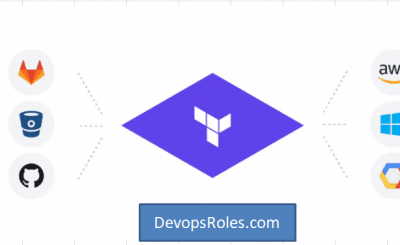Table of Contents
Introduction
Infrastructure as Code (IaC) has revolutionized the way developers and system administrators manage, deploy, and scale infrastructure. Among the various IaC tools available, Terraform stands out as one of the most popular and powerful options. One of its key features is the use of Terraform modules, which allows for efficient, reusable, and maintainable infrastructure code.
In this article, we will dive deep into Terraform modules, exploring their purpose, usage, and how they help automate infrastructure management. Whether you’re a beginner or an experienced Terraform user, this guide will walk you through everything you need to know to effectively use modules in your infrastructure automation workflow.
What Are Terraform Modules?
The Role of Terraform Modules in Automation
A Terraform module is a container for multiple resources that are used together. Modules allow you to group and organize resources in a way that makes your Terraform code more reusable, maintainable, and readable. By using modules, you can avoid writing repetitive code, making your infrastructure setup cleaner and easier to manage.
Modules can be local (defined in your project) or remote (hosted in a Terraform registry or Git repository). They can be as simple as a single resource or as complex as a collection of resources that create an entire architecture.
Benefits of Using Terraform Modules
Code Reusability
One of the most significant advantages of Terraform modules is code reusability. Once you’ve defined a module, you can reuse it across different projects or environments. This reduces the need to duplicate the same logic, leading to a more efficient workflow.
Simplified Codebase
Terraform modules break down complex infrastructure configurations into smaller, manageable pieces. By abstracting resources into modules, you can keep your main Terraform configuration files concise and readable.
Improved Collaboration
With modules, teams can work independently on different parts of the infrastructure. For example, one team can manage networking configurations, while another can focus on compute resources. This modularity facilitates collaboration and streamlines development.
Easier Updates and Maintenance
When infrastructure requirements change, updates can be made in a module, and the changes are reflected everywhere that module is used. This makes maintenance and updates significantly easier and less prone to errors.
Types of Terraform Modules
Root Module
Every Terraform configuration starts with a root module. This is the main configuration file that calls other modules and sets up the necessary infrastructure. The root module can reference both local and remote modules.
Child Modules
Child modules are the building blocks within a Terraform project. They contain reusable resource definitions that are called by the root module. Child modules can be as simple as a single resource or a combination of resources that fulfill specific infrastructure needs.
Remote Modules
Terraform also supports remote modules, which are modules hosted outside of the local project. These can be stored in a GitHub repository, GitLab, or the Terraform Registry. Using remote modules makes it easier to share and reuse code across multiple teams or organizations.
How to Use Terraform Modules for Automation
Setting Up Your First Terraform Module
To get started with Terraform modules, follow these basic steps:
Step 1: Create a New Directory for Your Module
Start by organizing your Terraform code. Create a directory structure for your module, such as:
/my-terraform-project
/modules
/network
main.tf
outputs.tf
variables.tf
main.tf
Define Your Resources in the Module
In the main.tf file of your module directory, define the resources that will be part of the module. For instance, a basic network module might include:
resource "aws_vpc" "main" {
cidr_block = var.cidr_block
}
resource "aws_subnet" "subnet1" {
vpc_id = aws_vpc.main.id
cidr_block = var.subnet_cidr
}
Step 3: Define Variables
In the variables.tf file, specify any inputs that the module will require:
variable "cidr_block" {
description = "The CIDR block for the VPC"
type = string
}
variable "subnet_cidr" {
description = "The CIDR block for the subnet"
type = string
}
Step 4: Call the Module from the Root Configuration
In the root main.tf file, call your module and pass the necessary values:
module "network" {
source = "./modules/network"
cidr_block = "10.0.0.0/16"
subnet_cidr = "10.0.1.0/24"
}
Advanced Use Cases for Terraform Modules
Using Remote Modules for Reusability
In larger projects, you might prefer to use remote modules. This allows you to share modules across multiple projects or teams. For instance:
module "network" {
source = "terraform-aws-modules/vpc/aws"
cidr = "10.0.0.0/16"
}
This approach ensures you can easily update modules across multiple infrastructure projects without duplicating code.
Module Versioning
When using remote modules, it’s important to pin the module version to ensure that updates don’t break your code. This is done using the version argument:
module "network" {
source = "terraform-aws-modules/vpc/aws"
version = "3.0.0"
cidr = "10.0.0.0/16"
}
FAQ: Automating Infrastructure with Terraform Modules
Common Questions
What Is the Best Way to Organize Terraform Modules?
The best way to organize Terraform modules is to structure them by functionality. Group resources into separate directories based on their role, such as network, compute, storage, etc. Keep the module files minimal and focused on a single responsibility to enhance reusability and maintainability.
Can Terraform Modules Be Used Across Multiple Projects?
Yes! Terraform modules are designed for reuse. You can use the same module in multiple projects by either copying the module files or referencing remote modules hosted on a registry or version-controlled repository.
How Do I Debug Terraform Modules?
Debugging Terraform modules involves checking the output of Terraform plan and apply commands. Use the terraform plan command to inspect the execution plan and verify that resources are being created as expected. Additionally, ensure your variables are being passed correctly to the modules.
Can I Use Terraform Modules with Other IaC Tools?
Terraform modules are specific to Terraform, but you can integrate them with other tools if needed. For example, you might use Terraform modules alongside Ansible for configuration management or Kubernetes for container orchestration, depending on your infrastructure needs.

External Resources
Conclusion
Automating infrastructure with Terraform modules is an effective way to simplify and streamline the management of your cloud resources. By leveraging the power of modules, you can reduce duplication, improve collaboration, and create reusable infrastructure components that are easy to maintain and update.
Whether you’re just getting started or looking to refine your workflow, mastering Terraform modules will undoubtedly help you achieve greater efficiency and scalability in your infrastructure automation efforts.
If you have any questions or need further guidance, feel free to explore the external resources or leave a comment below. Thank you for reading the DevopsRoles page!
